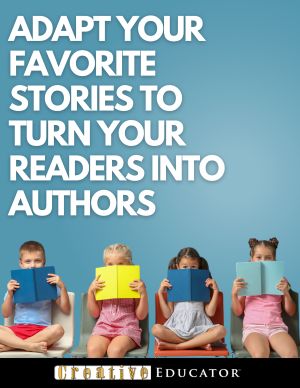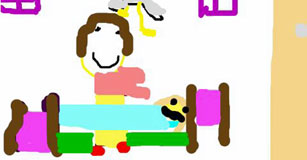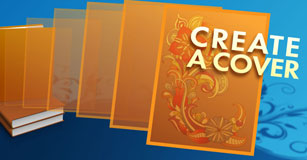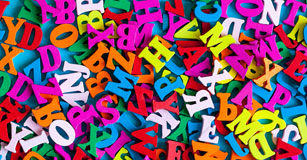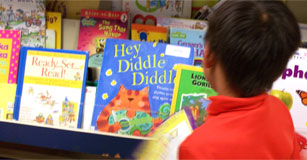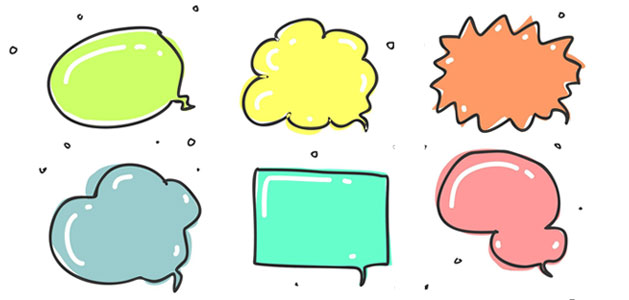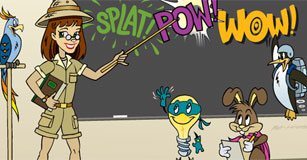More Than Just a Writing Prompt
Using multimedia as a writing prompt can engage students and encourage critical thinking.

A few years ago, I heard a presenter at a conference proclaim, “If your students are not participating in meaningful, structured writing time every day, you DON’T have a writing program!” What?!? I don’t?
The comment made a significant impression on me, and though the presenter’s comment was laced with hyperbole, I took the message to heart. If we want kids to be better writers, they have to do it more often, and it has to be engaging.
We’ve all been there… the complacency zone… where we require students to have a spiral notebook, read a prompt off the board, and write in their journals. But often during this automated process, students simply check out. At the end of the term, we wind up with a pile of half-destroyed journals, many smeared with some mystery goo and looking like they have lived in the trunk of a car for three months. Where’s the “meaningful” in that?
“…I tried meeting my students where they already were — in the land of MP3s and YouTube — and my classroom was forever changed.”
I decided that I was done with “old-school” journaling that wasn’t making anyone happy or meeting anyone’s needs. Instead, I tried meeting my students where they already were – in the land of MP3s and YouTube – and my classroom was forever changed.
I started by using a song from a popular contemporary band. The moment I hit play, I had the attention of 35 would-be writers. They sang along, we talked, we discussed, we analyzed. We found metaphors. We connected to their experiences. We activated their prior knowledge. What started out as a 15-minute journaling session quickly found us at the end of the period.
Some kids were clearly at the beginning of their ability to formulate thoughts about the music’s meaning and symbolism, but others ran with it, making connections to the music from day one. This struck me as a potential teaching gold mine.
My next experiment was with a photograph. I displayed it with the projector while the students walked in. They were already commenting before class started, oblivious of the connections they were making and skills they were practicing. They made projections about the setting; they asked questions about the characters; they noticed the symbols and structure. When I led them a bit further, they began to analyze critically, support with evidence, address mood and tone, and identify purposes.
There were so many hands in the air, waiting to share ideas that I was almost overwhelmed. Finally I said, "OK, I want to hear all of these ideas, but we have to end the discussion here. If you didn’t get a chance to share, write down your follow-up thoughts in your journals." What happened next was nothing short of a miracle. Zippers of backpacks zipped, binders clicked and clacked, pieces of paper crinkled, and hands began to write… feverishly!
Over the next two or three days, the students literally came through the door asking what we were going to write about that day. I had to build up my repertoire! It got to the point where they were disappointed when they arrived in class and we didn’t journal.
When I did my first round of grading, I noticed two things. The first observation was that ALL of my students, no matter their writing ability or skill, were producing exponentially more writing. The second observation was that many advanced kids were making very sophisticated connections and finding evidence of personification, symbolism, and metaphor!
With this new information, I decided to address what I considered to be two things needing improvement. First, we needed to create a way to bring the beginners up to the level of those making deeper connections, and second, we needed cut down on how much paper we were using.
I transferred the writing prompts to a blog so that the kids could answer electronically, even when they were absent or we had a guest teacher. This also meant I could grade from anywhere at any time without having to cart home 150 journals. Moving to a blog allowed the students to respond to the writing of other students through comments. This really proved a benefit to the students who were still beginners because they had access to other student’s responses to the same media.
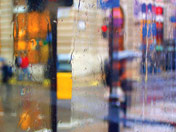
In addition to the beginners getting exposed to the other students’ responses (thank you, Vygotsky!), I put in place a phase system for the responses. The kids could start in Phase 1 and self-differentiate whenever they were ready to take the next step.
Here’s what worked for me:
Phase 1: Observations
Students make 10 observations about the media. For example:
I see a red room, there is a stairway in the center of the picture, there is light shining in from the hallway, I hear a lot of drums, the singer sounds sad.
Phase 2: Questions
When students are comfortable with the process of observing, they can begin asking critical questions about the media, beginning their questions with “Why” and “I wonder…” Examples include:
- Why did the artist choose red?
- Where does the stairway lead?
- Who is the song talking about?
- What evidence is there for the mood or tone?
- Why did the artist choose to make the drums so significant?
Phase 3: Connections
When students have been successful questioners for a few weeks and have had a significant chance to observe other students’ responses on the blog and during class discussions, encourage them to begin answering questions they asked in Phase 2. Examples:
- I think the artist chose red for the room because red represents anger. I think the stairway leads up because the room is abandoned and it doesn’t seem like anyone would want to go into it, they would probably want to get out of there. The song seems sad because of its slow pace and melancholy lyrics.
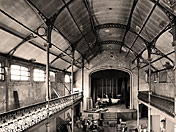
Student work in Phase 3 is the basis for success in multiple strands of Language Arts standards. For example:
- Talking about a picture and giving examples of what you see and why it is important equals supporting with evidence.
- Talking about the mood of a song is equivalent to inferring the mood or tone of a poem.
- Describing colors and structures as symbols is using figurative language (simile, metaphor, personification, etc.).
- Discussing the meaning of a photo or song is invaluable practice at finding the author’s message or exploring recurring themes.
Moving away from the textbook can make you feel like you may be leaving students under-prepared for assessments. When others suggest to me that while this type of work is nice, they don’t have time for that in THEIR classrooms, I respond that these activities are so packed with standards, they don’t have time NOT to be doing them!
Using multimedia for writing response helps students develop thinking and learning skills that extend beyond the classroom. By teaching with videos, photographs, music, and other media, you get students in the habit of critical thinking and analysis each night, during the weekend, and over school break as they encounter these forms of media in the world around them.
If you are ready to get started, begin on a small scale. I used the idea of Music Fridays in the beginning. If you choose a song or picture that YOU are excited about, your energy will be more believable and authentic and students will respond in kind. Soon you too will be collaborating in a big way and making a lasting and profound impression on your students.
Tips for Making Daily Writing a Success
1. Model, model, and model again! Demonstrate the process by letting students see what observations you would make, letting them know what questions you have, and joining the blog conversations with your critiques and ideas.
2. Have all students first practice Phase 1 and let them all experience Phase 2. You will soon be able to see which students are ready to move on. Some students will be tempted to jump right to Phase 3 thinking, but working in Phase 1 and 2 first will ensure they have the foundation in place to ensure that their conclusions are supported and meaningful.
3. Use websites or apps that scan the Internet for media. I like StumbleUpon.com because it asks about your interests when you first sign on. If you include photography and art in your interests, you will gain access to lots of images and media you may not have found otherwise. I built most of my library this way.
4. Keep an eye out for copyright and proprietary issues. Music and artwork are the property of the artist. Instead of posting media directly to a blog, post URLs so that the artists get credit for their work and students can find out more about the artist and/or the subject.
5. Validate the work of students who are successfully giving evidence to support their thoughts. Encourage student growth with regard to having differing opinions from their classmates and collaborating in a social learning environment, both in classroom discussions and on a blog.


